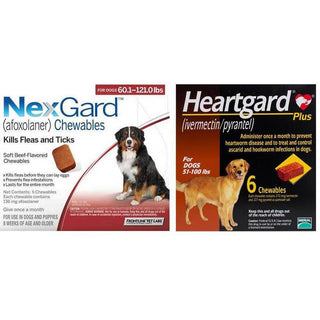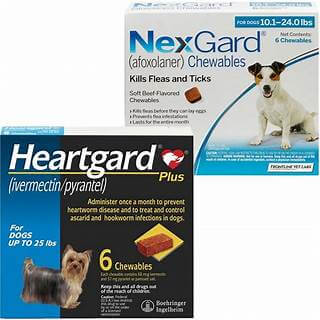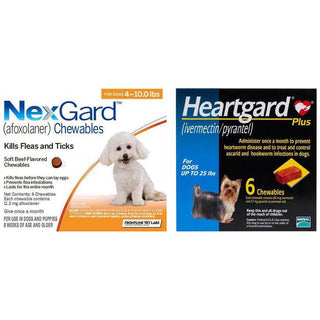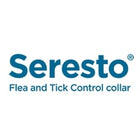
There are various parasites that can affect our dogs, but surprisingly, ringworm isn’t a worm. Despite its misleading name, ringworm is a highly contagious fungal infection that can spread to animals and humans.
Because ringworm spreads quickly and can easily pass between species, it’s essential to recognize the signs of ringworm in dogs and take steps to prevent it from spreading further.
What is Ringworm in Dogs?
Ringworm in dogs, also referred to as dermatophytosis, is a fungal infection triggered by harmful fungi known as dermatophytes. These fungi grow on the skin's surface, targeting the skin, hair follicles, and nails. Commonly impacted regions include the face, ear tips, tail, and paws. However, puppies, older dogs, and those with weakened immune systems are more susceptible to widespread infections.
Approximately 70% of ringworm cases in dogs are due to the fungus Microsporum canis, while Microsporum gypseum accounts for about 20%, and Trichophyton mentagrophytes causes the remaining 10%.
How Does Ringworm Spread in Dogs?
Ringworm in dogs spreads primarily through direct contact with an infected animal. However, it can also be transmitted indirectly by touching contaminated items such as food bowls, bedding, furniture, or carpets. Dogs with cuts, scrapes, or other skin damage are more susceptible to infection upon contact with the fungus.
Fungal spores are highly resilient and can survive on household surfaces, furniture, and fabrics for up to two years. Infected dogs continuously shed these spores along with infected hairs, increasing the risk of spreading ringworm throughout the home.
Common Symptoms of Ringworm in Dogs
Ringworm in dogs typically affects areas like the face, ears, tail, and paws. The most common signs to watch for include:
- Circular patches of hair loss, often surrounded by red, crusty edges
- Broken hair and a dull, unhealthy coat
- Dry, flaky skin or excessive dandruff
- Red, inflamed skin in affected areas
- Darkened or discolored patches of skin
- Itching, frequent scratching, or excessive grooming
- Swollen nail beds or nails that appear dark, dry, or brittle
- Nails that are brittle, misshapen, or prone to breaking
If you see any of these signs, consult your veterinarian promptly for an accurate diagnosis and to start appropriate treatment.
Ringworm Diagnosing in Dogs
If you think your dog may have ringworm, it is must to consult your vet for an accurate diagnosis and appropriate treatment. Prompt action can help stop the infection from spreading to other pets and household members.
To diagnose ringworm, your vet may:
- Use an ultraviolet (UV) lamp to examine your dog’s skin and fur. Some types of ringworm cause infected areas to glow an apple-green color under UV light.
- Collect a sample of your dog’s fur and examine it under a microscope to detect fungal spores.
- Perform a fungal culture by placing a sample in a lab dish to see if the fungus grows. This method is highly accurate but may take up to 10 days to get the results.
If your dog is diagnosed with ringworm, it’s important to check other pets and family members for signs of infection, as ringworm can quickly spread between animals and humans.
Ringworm Treatment for Dogs
Although minor ringworm infections might clear up without intervention, treatment is advised to accelerate healing and minimize the risk of transmission. Your vet will recommend the most suitable treatment plan depending on the specific fungus causing the infection.
Treatment options may include:
- Oral medications: Antifungal tablets to prevent the fungus from reproducing.
- Topical treatments: Antifungal creams, lotions, or medicated shampoos to treat affected areas.
- Combination therapy: In some cases, both oral and topical treatments may be necessary for effective results.
Strictly adhering to your veterinarian's guidance is essential, as incomplete treatment may cause the infection to return.
Tips to Stop Ringworm from Spreading in Dogs
To prevent ringworm from spreading in your home:
- Isolate your dog: Keep your infected dog confined to a specific room until treatment begins.
- Limit contact: Minimize direct contact with your dog. If handling is necessary, use disposable gloves and be sure to wash your hands and clothing thoroughly afterward.
- Clean your home: Vacuum carpets, furniture, and upholstery regularly. Steam cleaning can help eliminate lingering spores.
- Disinfect surfaces: Wash bedding, towels, and soft furnishings in hot water and disinfect hard surfaces using a vet-recommended cleaner.
Following these steps is essential to prevent the infection from coming back after treatment. Even after your dog has healed, fungal spores can linger in the environment for months, so deep and consistent cleaning is crucial to fully eliminate the risk of reinfection.






